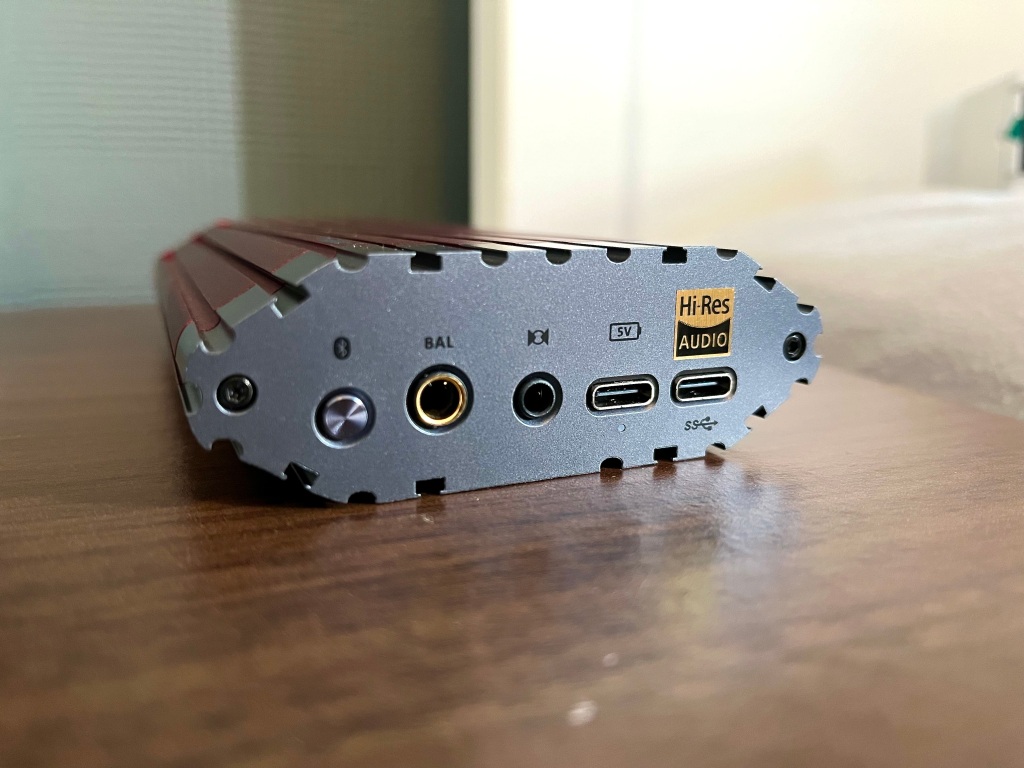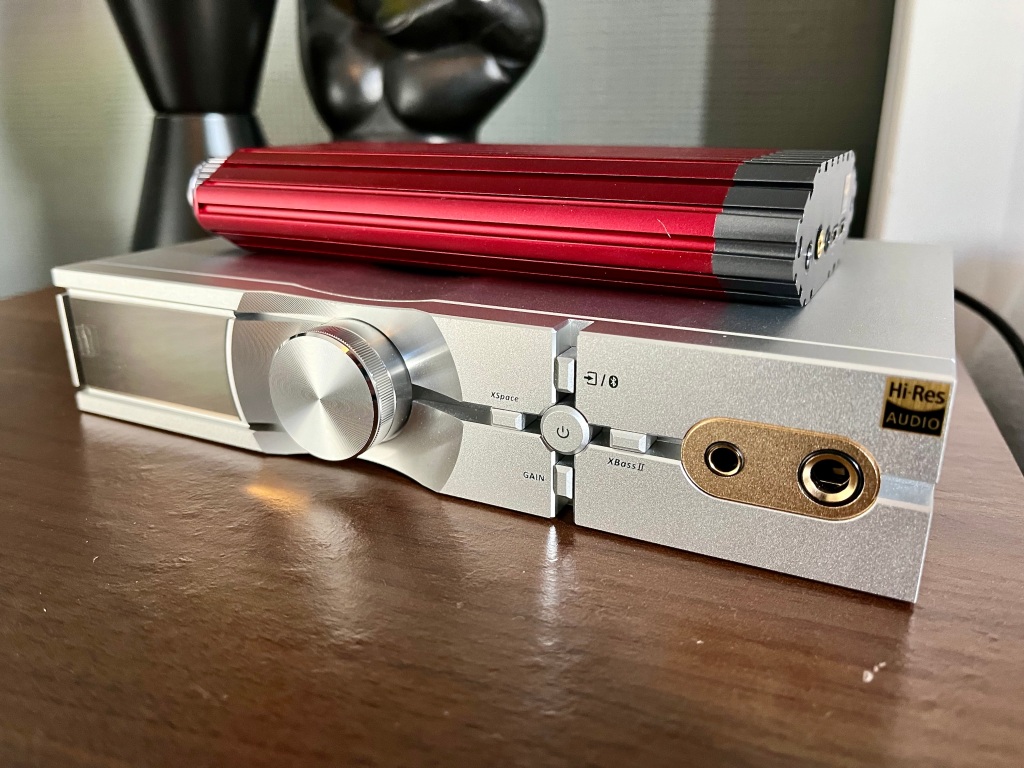- Joined
- Mar 20, 2013
- Posts
- 16,614
- Likes
- 12,420
Thanks so much for your thoughts on our Diablo 2, we very much appreciate you taking the time to post them here and in the "Showcase thread".Hi Guys, will copy my diablo 2 review below.

Hi Guys,
Today we are taking a look at a new product from iFi Audio, the iDSD Diablo 2. This is the most recent iteration in their Micro iDSD lineup, of which I am a long-term fan. The Micro iDSD lineup has always offered a great set of features and performance for their price point, making them a default recommendation for anyone looking for a great transportable headphone DAC/Amp combo unit. The new Diablo 2 has a couple of different features that are new for the Micro iDSD lineup, whilst it is lacking some of the features others have (similar to the original Diablo.)
The first thing I should talk about, which has been a point of contention on forums in recent times is the power rating for the Diablo 2. iFi has always advertised peak output power, versus continuous RMS. The Diablo 2 is advertised as having 5180mw of output very similar in amount to the previous Diablo 1. This is peak output so for very short peak transients it can manage this output, but for continuous power, it can only manage about 2000mw or just under (depending on the resistance.) This is similar to the Pro iCAN, which is advertised as having 14,000mw of output, but again this is peak output and probably managed somewhere about 8000mw in terms of continuous RMS power. In terms of real-world use, for a transportable device, this is totally acceptable and even impressive for a device of its size and general use case. I didn’t have any trouble with the output power of the Diablo 2, as it is very similar to the Diablo 1. One thing to take note of is that the lower the resistance of the headphones (ohms) that you are using, the more it makes sense to use the Diablo 2’s single-ended output, as it delivers more power from the single-ended output into lower resistances than from the balanced output. The extreme case that I ran into this was with the Audeze LCD-5 which has an incredibly low resistance value of 14ohms. I ran into the current protection engaging with the LCD-5 with bass-heavy music at medium volumes using the highest gain setting on the 4.4mm output. Using the 6.35mm output with the LCD-5, I had no issues. Other than that pair of headphones with their unusually low resistance, the Diablo was totally usable in terms of power output.

Now that we have got that disclaimer out of the way, let’s talk about the product in general. The Diablo 2 adopts a new ridged metal case with a nice red anodized finish. Similar to the previous Diablo 2, it has a 6.35mm single-ended output and a 44mm balanced output. There are three gain modes, which have been renamed from the older Micro iDSDs. I don’t like this decision, as the actual gain levels are the same, and it will just create confusion with past products. This means that the levels are 0dB, 9dB, and 18dB, but instead of being called Eco, Normal, and Turbo, they are called Normal, Turbo, and Nitro. Same thing, but it makes it sound like the new “Nitro” mode has a higher gain setting than the old Turbo mode, which it doesn’t. New name, same thing. Another thing which can add confusion for newer users is that iFi is using the term “NOS” (as in nitrous oxide – “Nitro”) to describe the highest gain setting. For someone who doesn’t do a lot of reading about the product, this brings up an issue as NOS in “audiophile speak” could mean “Non Oversampling” with regards to the DAC portion of the Diablo 2, or it could even mean “New Old Stock” with regards to vacuum tubes (which the Diablo 2 most certainly doesn’t have.) The old naming scheme for the gain levels wasn’t broken, it didn’t need to be fixed and seems almost dishonest in that iFi seem to be trying to get people to think the Diablo 2 has a new higher gain higher power output, which it doesn’t.
The Diablo 2 comes with a neat plastic stand which is handy if you are going to be using it as a desktop unit, tilting the front panel upwards to allow for easy access to the front panel. The Diablo 2 also still has iFi’s IEMatch feature, which is selectable on the bottom of the unit. Also new for the Diablo 2 are the USB-C inputs on the rear of the device. This means a USB-C input for data and a USB input for charging. I do wish the Diablo 2 had the feature the Gryphon has to combine charging and data on one input as an option. You are able to charge and also bypass the battery of the Diablo 2, and use a 5v iFi wall wart which comes stock with the Diablo 2. This is handy for anyone who is going to be primarily using the Diablo 2 as a desktop unit. Also on the rear are a SPDIF 3.5mm coax/optical combo input, and a 4.4mm input/output for use as a DAC only, or an amp only. Also on the rear of the unit is the Bluetooth pairing button, a new feature for the Diablo 2 in comparison to the Diablo 1.

The most noticeable new feature on the Diablo 2 is support for any new “X-MEMS” driver-equipped IEMs. X-MEMS is a new driver technology in the IEM space which requires a dedicated amplifier, and it is really only starting to be adopted by manufacturers as we speak. Whether or not it will be widely adopted in the future I don’t know, nor have I heard any example of an X-MEMs driver IEM thus far. However, the feature is present on the Diablo 2, so if you happen to be an early adopter of the X-MEMS tech, the Diablo 2 has you covered.
The sound of the Diablo 2 is incredibly similar to that of its predecessor the Diablo 1, which I reviewed in the past. I would recommend popping over to that review if you are interested in more comments about the Diablo 2’s sound quality in addition to this review, due to how similar they are overall. It is slightly leaner and brighter than the older Micro iDSD models. The bass is quick and precise, and I would say very neutral in its overall level. The mids are less warm and have less presence, especially in the low midrange compared to the older Micro iDSD models. The treble is slightly brighter but also slightly more detailed than the older Micro iDSD models. The Diablo 2 follows suit with the Diablo 1 in that it doesn’t feature any of the typical iFi “3D” or “XBASS” tweaks, so if you would like to tweak the bass level or sound staging, it would need to be done via EQ or something similar from your source, not on the Diablo 2 itself.

The overall technical performance is again very similar to the Diablo 1. It is slightly more detailed, and slightly more refined sounding than the other Micro iDSD models, but also slightly less easygoing due to this. The dynamic performance of the Diablo 2 is again very similar to the Diablo 1, and slightly more refined and quick than than the other Micro iDSD models.
The build quality of the Diablo 2 is totally acceptable. The new metal case is nice in the hand and has a good, solid, well-built feeling to it. The new, larger volume knob is slightly easier to work with in comparison to the Diablo 2, and the channel matching of the volume pot was also totally ok, with no real imbalance at lower volumes. I also like the new red anodized finish, and think it looks much better than the previous slightly more garish red of the Diablo 1.

Overall, in terms of performance, the Diablo 2 is incredibly similar to its predecessor, the Diablo 1. Very similar sonically, with some nice improvements in terms of build quality, and implementation of features. My main issue is that the MSRP of the Diablo 2 has increased to $1299USD compared to $899USD for the Diablo 1. At $899 for the Diablo one, I felt it was a good product, but was even starting to wonder if it was increasing too much and moving away from iFi’s previous core tenents. I’ve always felt iFi was a brand that delivered very high performance for the asking price, combined with Swiss army knife-like feature sets. Their gear always sounded good, was affordable, and offered a lot of features for the money. The Diablo 2 sort of feels like a car crash with regards to all of those previous things I valued about the brand. The Diablo 2 sounds incredibly similar to the Diablo 1, it has a new feature in the X-MEMS support (but next to no one has X-MEMS IEMs at this point in time) and beyond a new look and slightly better-built case, doesn’t really offer anything of note over the previous version, but costs $400USD more? I like iFi audio, I am a supporter of the brand, and I hope they can quickly course correct and move back to being focused on the things that brought them most of their success in the headphone space in the first place. A focus on quality, affordability, good feature sets, and if a new product is released, to make it a meaningful improvement over the previous version. When you combine this with the fact that Adorama in the USA had the Micro iDSD Signature (Finale) on sale for $350USD brand new, it becomes damn near impossible to recommend the Diablo 2. For me to recommend the Diablo 2, your use case would have to be incredibly specific.
If you
-Use XMEMS IEM’s
-Also use hard-to-drive headphones
-Do not want desktop-size equipment
-Need transportability
-Are not budget limited
then I could make a recommendation for the Diablo 2.

Comparison with the Neo iDSD 2
I don’t dislike the Diablo 2 in terms of its strict sonic performance, it just feels like a missed opportunity for iFi Audio. It still sounds good like its predecessor did, it has great power output for a portable device (with the caveat of the peak vs continuous power taken into account,) and it feels sturdy and well-built. However, the Diablo 2 costs too much at its MSRP, to the point of making me feel that iFi is being opportunistic, and also seems to be a summation of iFi’s abandonment of the company’s previous values and core beliefs. Those previous values and core beliefs about their product lineup and design direction were what made them great, and a fan favourite amongst the headphones enthusiast community. I do have the new Neo iDSD 2 here for review, and I do feel more positively about it than I do the Diablo 2, so I hope iFi is not a lost cause, and the ship can be turned around and get back to heading in a good direction.
Cheers!!

|
Stay updated on iFi audio at their sponsor profile on Head-Fi.
|






















